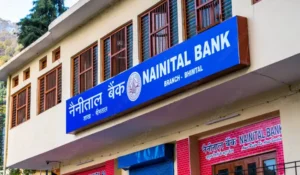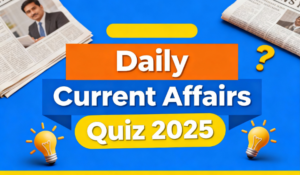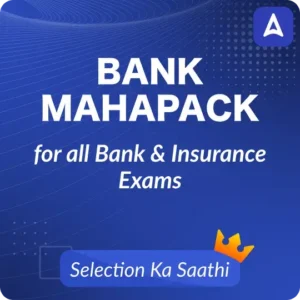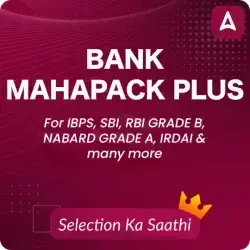Dear Readers,
Reasoning is a game of wits and presence of mind! Yes, it is true and it might seem as the greatest of the challenge after English Section’s surprises but yet this one can easily be dealt with. You just need correct practice and hardwire your brain to quickly make decisions of what to attempt and what to leave. And for same we are providing you questions of Reasoning Question. To Practice more with these new pattern Reasoning Question for RRB Clerk Exam 2017.
Directions (1-5): Study the following information carefully and answer the question given below:
Eight students P, Q, R, S, W, X, Y and Z will have to submit the project in the months of March and July but not necessarily in the same order. In each month, they will submit the project on dates 13th, 17th, 19th and 21st of the given month. Only one student will submit the project on these given dates.
P will submit the project on 17th of any of the given month. Three students will submit the project between P and Z. Only one student will submit the project between Z and Q. Two students will submit the project between Q and Y. S will submit the project immediately before the W. Three students will submit the project between S and R. X will not submit the project on 13th July.
Q1.Who among following will submit the project on 13th July?
(a) Z
(b) Q
(c) R
(d) Y
(e) S
Q2. How many student/s will submit the project between Y and Q?
(a) One
(b) Two
(c) Three
(d) More than thre
(e) None of these
Q3. Who among following will submit the project on 13th March?
(a) R
(b) Y
(c) S
(d) X
(e) W
Q4. If X is related to S and Z is related to Q, in the same way S is related to?
(a) X
(b) P
(c) Z
(d) Q
(e) Y
Q5. P will submit the project on which of the following dates?
(a) 17th March
(b) 17th July
(c) 19th March
(d) 19th July
(e) None of these
Directions (6-8): In each of the questions below are given four statements followed by four conclusions numbered I, II, III & IV, you have to take the given statements to be true even if they seem to be at variance from commonly known facts. Read the answers and then decide which of the given conclusions logically follows from the given statements disregarding commonly known facts.
Q6.Statements: No time is money. Some money are perk. All perk is graph. Some graph are diagram.
(a) Some money are diagram.
(b)Some graph are time.
(c)All diagram is time possibility.
(d)Some graph are not money.
(e)All time is graph
Q7.Statements: All kite are apple. Some apple are queen. Some queen are row. No row is pen.
(a) Some kite are row.
(b) Some row are apple.
(c) Some queen is not apple.
(d) All queen being pen is a possibility.
(e)All pen being kite is a possibility.
Q8.Statements: Some boxes are nodes. Some nodes are Script. All script are train. All train are coins.
(a) Some boxes are train.
(b) No nodes is coins.
(c) Some script are boxes.
(d) Some coins are boxes.
(e)Some nodes are trains.
Directions (9-10): In the questions below are given one conclusions followed by five set of statements. You have to choose the correct set of statements that logically satisfies given conclusions either definitely or possibly. Assume the given statements to be true even if they seem to be at variance from commonly known facts.
Q9.Conclusions: No time is diagram.
(a) Some copy is graph. All graph are time. Some time is diagram.
(b) Some graph are copy. All time are copy. All copy are diagram.
(c) None of these
(d) Some copy is time. All time is graph. No graph is diagram.
(e)All time are graph. All graph are copy. All copy are diagram.
Q10. Conclusions: Some money are not finds.
(a) All softy are money. All money are bags. All bags are finds.
(b) Some money are bags. All bags are finds. Some finds are softy.
(c) All bags are money. Some bags are softy. No bag is finds.
(d) None
(e) Some softy are bags. All bags are finds. All softy are money.
Directions (11-15): Read the given information carefully and answer the questions that follow.
Twelve persons N, O, P, Q, R, S, T, U, V, W, X and Y are sitting in two parallel row. Row 1 and row 2 with equal number of person on each row. Row 1 is facing south and row 2 is facing north. P, Q, R, S, T, U are in Row 1 and N, O, V, W, X, Y are in Row 2. Each persons of Row 1 is exactly opposite the other person in Row 2.
• V, who is at one of the ends of the row, is second to the left of Y.
• There are two persons between N and O.
• There is only one person between S and T.
• U is third to the right of Q.
• U is not opposite either V or Y.
• S and T are not opposite to V. P is adjacent to S.
• W, who is not opposite to T, is not adjacent to N.
Q11. Who among following is opposite to Q?
(a) N
(b) Y
(c) W
(d) X
(e) O
Q12. How many persons are there between R and S?
(a) Four
(b) Three
(c) Two
(d) One
(e) None of these
Q13. If R is related to X in the same way as U is related to O, based on the given arrangement, who among the following is P related to, following the same pattern?
(a) N
(b) V
(c) W
(d) Y
(e) None of these
Q14. Which of the following persons are at the ends of the row?
(a) V, O
(b) U, Q
(c) V, W
(d) R, T
(e) None of these
Q15. Which of the following statements is true about P?
(a) Y is opposite to P.
(b) N is not the neighbour of that person who is opposite P.
(c) S is not adjacent to P.
(d) P is immediate left of Q.
(e) O is opposite that person who is 3rd to the left of P.





 Profit, Loss & Discount – Concept + ...
Profit, Loss & Discount – Concept + ...
 Nainital Bank Recruitment 2025-26 Notifi...
Nainital Bank Recruitment 2025-26 Notifi...
 Daily Current Affairs Quiz 13 December 2...
Daily Current Affairs Quiz 13 December 2...








